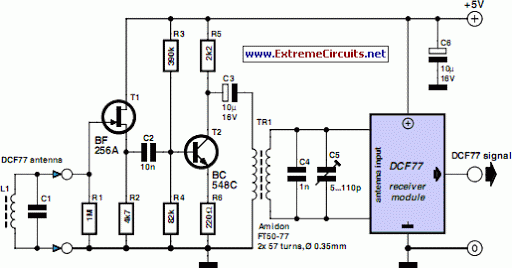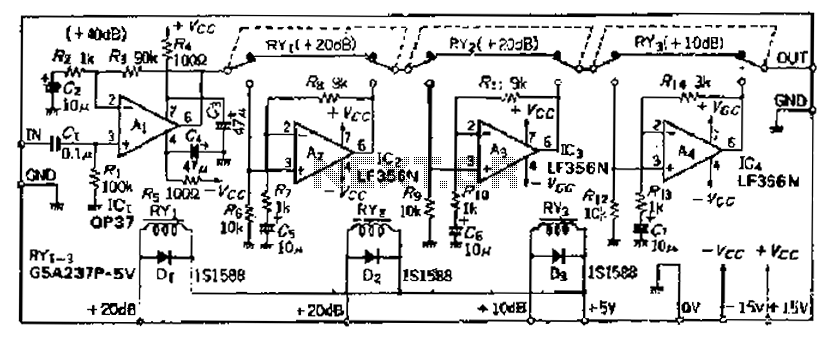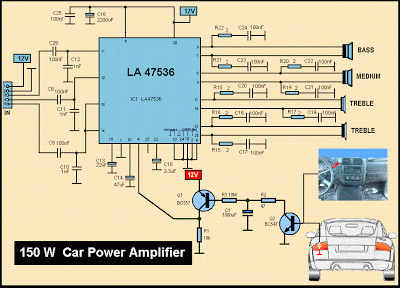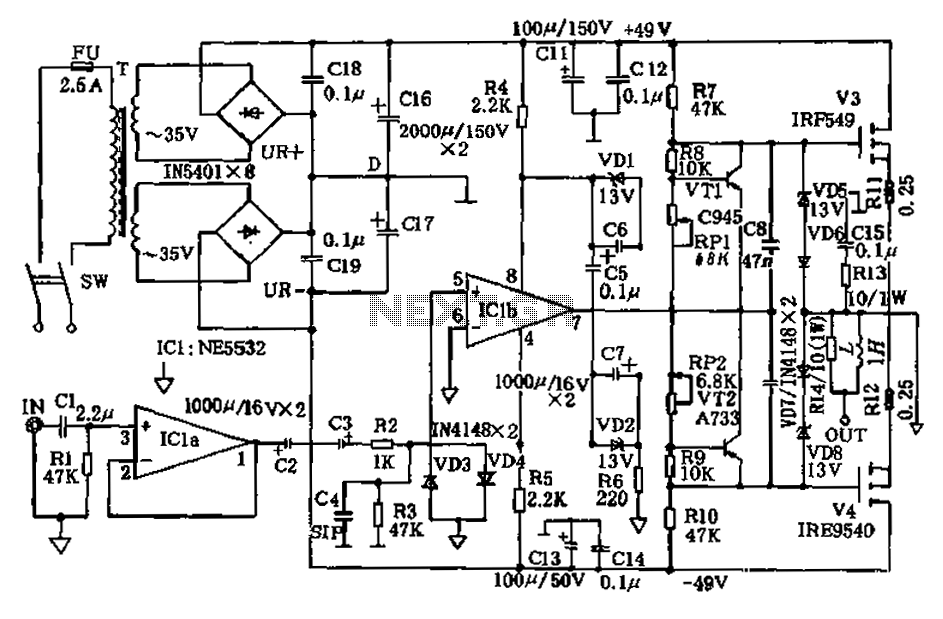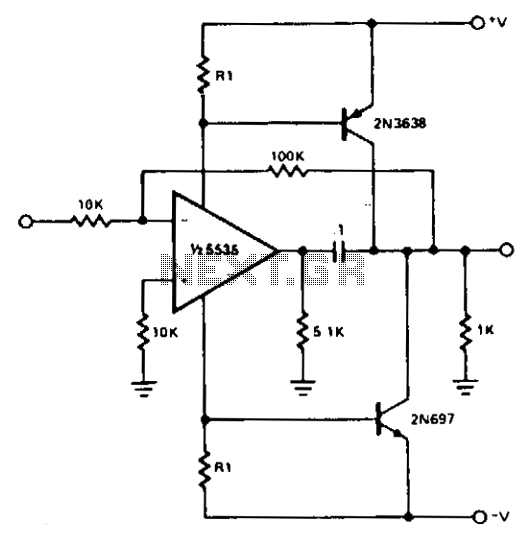
DC Servo MOSFET Amplifier
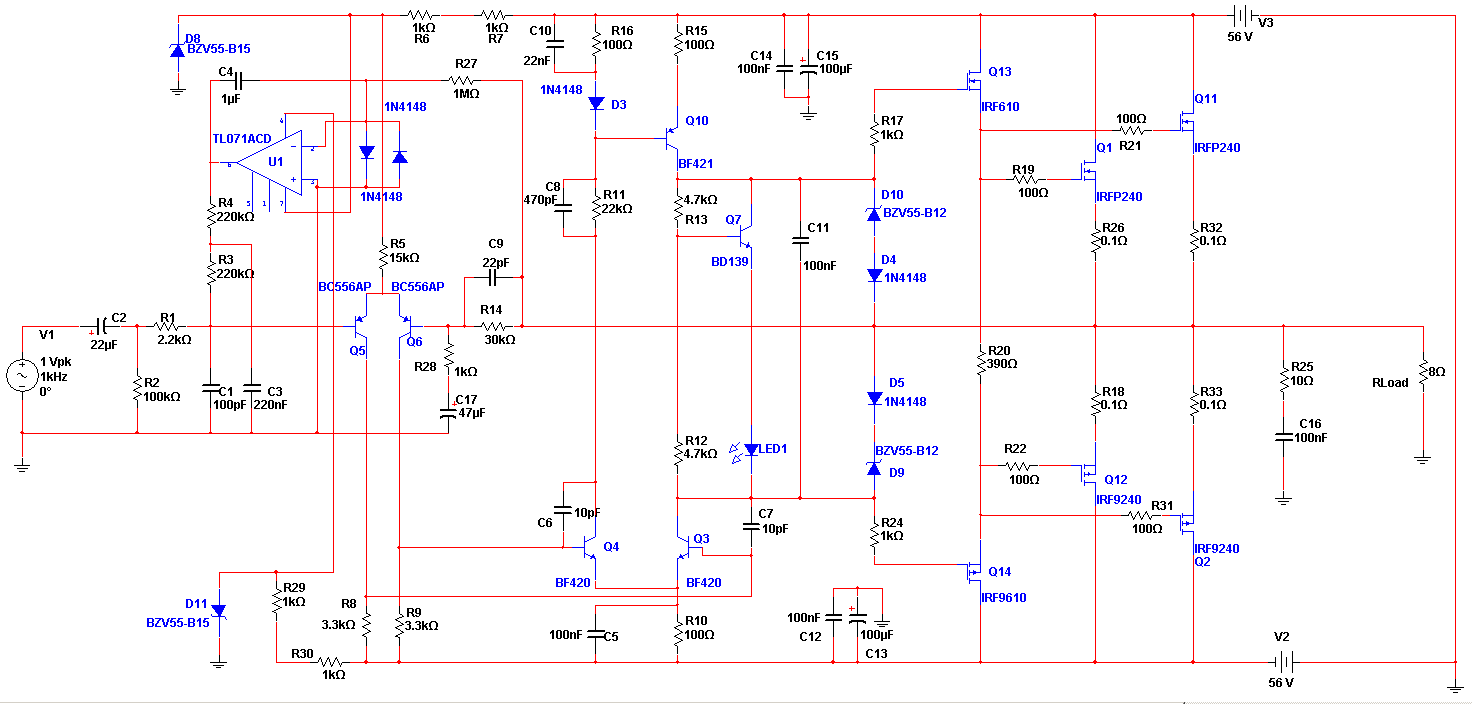
The Apex amplifier has a corrected schematic that includes variations of the resistor R14 with different values (22k, 30k, 56k) and different power supply configurations.
The Apex amplifier circuit is designed to deliver high-fidelity audio amplification. The schematic incorporates a variety of resistor values for R14, allowing for tuning of the amplifier's response and performance. The choice of resistor value affects the gain, bandwidth, and overall stability of the amplifier.
In the circuit, R14 plays a crucial role in determining the feedback network's characteristics, which directly influences the amplifier's linearity and distortion levels. By experimenting with resistor values of 22k, 30k, and 56k, users can observe how these changes impact the amplifier's output characteristics, such as frequency response and gain.
The power supply configuration is another critical aspect of the amplifier's design. Different supply voltages can significantly alter the performance, affecting parameters like headroom, dynamic range, and maximum output power. It is essential to ensure that the power supply meets the voltage and current specifications required by the amplifier to avoid issues like clipping or thermal overload.
When constructing the Apex amplifier, careful attention should be paid to the layout of the circuit to minimize noise and interference. Proper grounding techniques and the use of decoupling capacitors can further enhance the performance of the amplifier. Overall, the flexibility in resistor values and supply configurations allows for a customized approach to achieving the desired audio quality.Apex seems i begin to love this amp the corrected clear schematic is this with different R14 values(tried 22k,30k,56k) and different supply.. 🔗 External reference
The Apex amplifier circuit is designed to deliver high-fidelity audio amplification. The schematic incorporates a variety of resistor values for R14, allowing for tuning of the amplifier's response and performance. The choice of resistor value affects the gain, bandwidth, and overall stability of the amplifier.
In the circuit, R14 plays a crucial role in determining the feedback network's characteristics, which directly influences the amplifier's linearity and distortion levels. By experimenting with resistor values of 22k, 30k, and 56k, users can observe how these changes impact the amplifier's output characteristics, such as frequency response and gain.
The power supply configuration is another critical aspect of the amplifier's design. Different supply voltages can significantly alter the performance, affecting parameters like headroom, dynamic range, and maximum output power. It is essential to ensure that the power supply meets the voltage and current specifications required by the amplifier to avoid issues like clipping or thermal overload.
When constructing the Apex amplifier, careful attention should be paid to the layout of the circuit to minimize noise and interference. Proper grounding techniques and the use of decoupling capacitors can further enhance the performance of the amplifier. Overall, the flexibility in resistor values and supply configurations allows for a customized approach to achieving the desired audio quality.Apex seems i begin to love this amp the corrected clear schematic is this with different R14 values(tried 22k,30k,56k) and different supply.. 🔗 External reference
